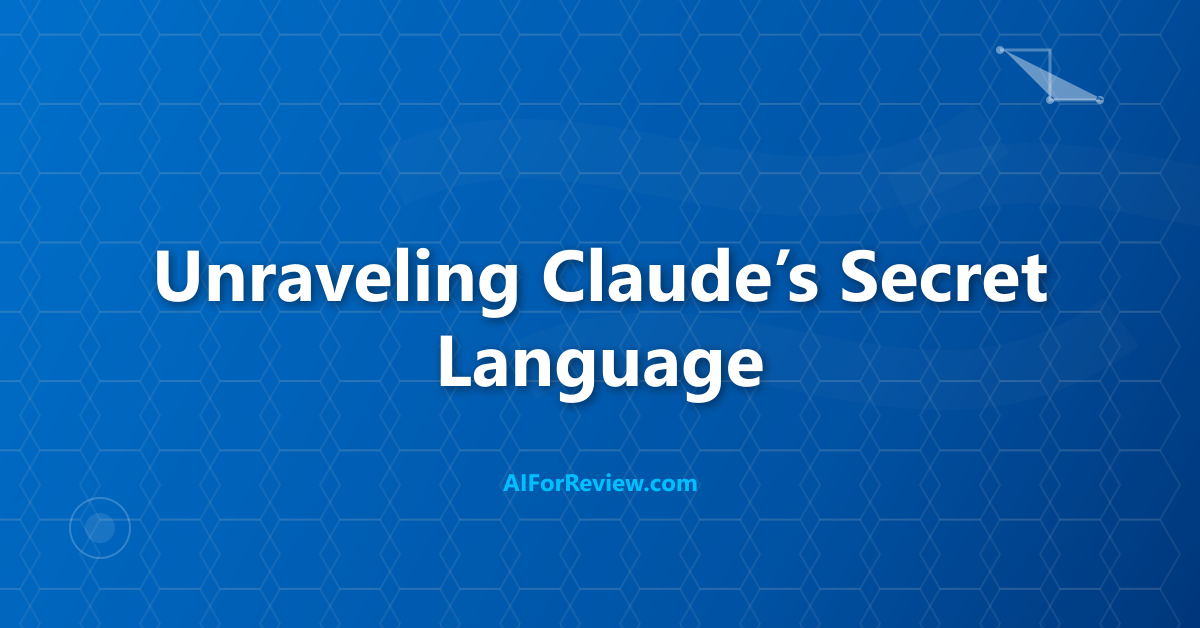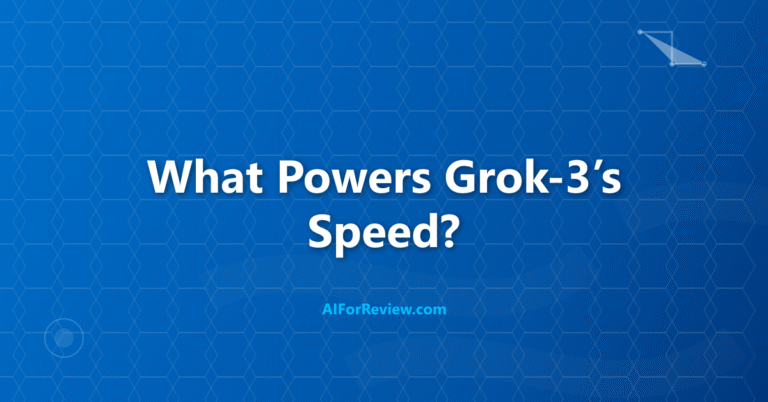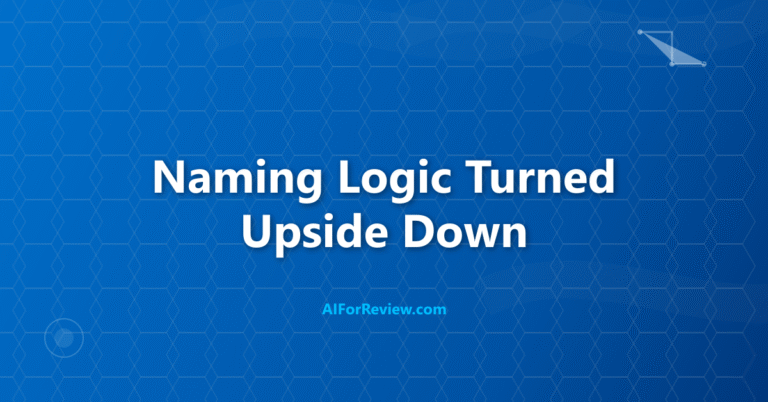Choosing between Claude Haiku, Sonnet and Opus is more than picking a clever name, it is about finding the right fit for every task. Anthropic’s poetry-inspired model names reveal exactly what each AI can do, making it simple for all of us to match our needs with the right technology. Discover how these unique names turn confusion into clarity and why understanding them can help us get better results, faster.
You know what I absolutely love about the AI industry? How companies think that naming their models after 14th-century poetry forms will somehow make their confusing product lineup more accessible to software developers and students. Because nothing says “user-friendly technology” like requiring a literature degree to understand which AI model you should use for debugging your Python script.
But here is the plot twist that actually makes this interesting: Anthropic’s poetry naming system is probably the most logical and informative naming convention in the entire AI industry, once you understand what they are actually trying to communicate. Unlike OpenAI’s random letter soup or Google’s numerical chaos, the poetry names actually tell you something useful about how each model behaves.
The Haiku Philosophy of Minimalist AI
Claude Haiku takes its name from the Japanese poetry form known for expressing complex ideas in just 17 syllables arranged in three lines. This perfectly captures the model’s design philosophy of maximum efficiency with minimal computational resources.
Haiku poems achieve impact through careful word selection and implied meaning rather than elaborate description. Similarly, Claude Haiku provides concise, focused responses that get to the point quickly without unnecessary elaboration or verbose explanations.
The traditional haiku emphasis on natural imagery and seasonal references translates to Claude Haiku’s ability to capture the essence of user requests without getting bogged down in excessive detail or tangential information.
Just as haiku poets must work within strict constraints to create meaningful art, Claude Haiku operates within computational constraints that force it to be efficient and direct in its responses.
Haiku Model Characteristics:
| Poetry Element | AI Implementation | User Benefit | Use Case |
|---|---|---|---|
| Brevity | Concise responses | Fast processing | Quick questions |
| Precision | Focused answers | Clear communication | Simple tasks |
| Efficiency | Low resource use | Cost effective | High volume |
| Clarity | Direct language | Easy understanding | Basic queries |
The haiku naming perfectly communicates that this model prioritizes speed and efficiency over comprehensive analysis or detailed explanations.
The Sonnet Structure of Balanced Performance
Claude Sonnet draws its name from the 14-line poetry form that balances structure with creativity, formal constraints with expressive freedom. This reflects the model’s position as Anthropic’s balanced option between speed and capability.
Sonnets follow specific rhyme schemes and meter patterns while allowing poets to explore complex themes and emotions. Claude Sonnet similarly follows structured reasoning patterns while maintaining flexibility to handle diverse tasks effectively.
The sonnet tradition includes both Shakespearean and Petrarchan forms, each with different structural approaches but similar goals of balanced expression. Claude Sonnet embodies this flexibility by adapting its response style to match the complexity and requirements of different user requests.
Traditional sonnets often explore themes of love, beauty, and human nature through carefully crafted language. Claude Sonnet approaches user queries with similar attention to crafting well-structured, thoughtful responses that balance thoroughness with accessibility.
The sonnet’s 14-line structure creates natural pacing and development of ideas, which mirrors Claude Sonnet’s approach to building responses that develop logically from introduction through conclusion.
The Opus Ambition of Comprehensive Analysis
Claude Opus takes its name from the term used for major musical or literary works that represent an artist’s most ambitious and comprehensive efforts. This naming choice signals that Opus is Anthropic’s flagship model designed for the most demanding intellectual tasks.
Musical opus numbers traditionally indicate a composer’s most significant works, often requiring extensive time and resources to create and perform. Claude Opus similarly requires more computational resources and processing time to deliver its most sophisticated reasoning capabilities.
The opus designation in classical music often applies to works that push artistic boundaries and explore complex themes requiring deep contemplation. Claude Opus approaches user queries with similar ambition, providing comprehensive analysis that explores multiple perspectives and implications.
Great opus works in music and literature are designed to reward careful attention and repeated engagement rather than casual consumption. Claude Opus responses similarly benefit from thoughtful consideration and often reveal additional insights upon reflection.
Opus Model Philosophy:
| Musical Concept | AI Implementation | Performance Impact | Best Use |
|---|---|---|---|
| Major Work | Comprehensive analysis | Slower processing | Complex research |
| Artistic Ambition | Deep reasoning | Higher resource use | Academic tasks |
| Masterpiece Quality | Superior accuracy | Premium pricing | Professional work |
| Lasting Value | Thorough responses | Extended consideration | Important decisions |
The opus naming effectively communicates that this model is designed for users who need maximum capability and are willing to invest more time and resources for superior results.
How Poetry Names Solve AI Communication Problems
Anthropic’s poetry naming system addresses several communication problems that plague other AI companies struggling with version numbers and technical designations.
The poetry names immediately communicate the intended use case and performance characteristics without requiring users to research technical specifications or benchmark comparisons. A haiku is obviously different from an opus in scope and ambition.
The naming system scales naturally as Anthropic develops new models. They can introduce additional poetry forms that clearly indicate where new models fit in the capability spectrum without creating numerical confusion.
The cultural associations with different poetry forms help users intuitively understand the tradeoffs between models. Most people understand that haiku prioritizes brevity while opus suggests comprehensive treatment.
The poetry theme also creates memorable branding that distinguishes Anthropic from competitors using generic technical names or confusing version numbers.
The Cultural Literacy Problem
While the poetry naming system is logically sound, it assumes cultural literacy that many AI users may not possess, creating its own accessibility challenges.
Many users, particularly those from non-Western educational backgrounds, may not be familiar with the characteristics of different poetry forms that inform the model naming. This creates barriers to understanding model capabilities.
The poetry references may seem pretentious or unnecessarily complex to users who prefer straightforward technical naming that clearly indicates performance characteristics or capabilities.
Younger users or those focused primarily on technical applications may find the literary references irrelevant or confusing compared to more direct naming conventions used by other AI companies.
The cultural specificity of the poetry references may not translate well across different markets and user communities that Anthropic wants to serve globally.
Why This Naming Actually Works Better
Despite the cultural literacy requirements, Anthropic’s poetry naming system provides several advantages over the numerical chaos used by competitors.
The names create clear mental models for users about what to expect from each model. Once you understand that haiku means brief and opus means comprehensive, the naming becomes more informative than arbitrary version numbers.
The poetry theme prevents the version number confusion that plagues OpenAI and Google, where users cannot determine which models are newer or better based on names alone.
The naming system encourages users to think about their actual needs rather than simply choosing the highest version number. This leads to better model selection and user satisfaction.
The cultural associations help users remember which model they prefer for different tasks, creating stronger user engagement and brand loyalty than generic technical names.
What Other Companies Could Learn
Anthropic’s poetry naming demonstrates how thoughtful naming conventions can improve user experience and product differentiation in the competitive AI market.
Descriptive names that communicate intended use cases work better than version numbers that suggest false hierarchies or chronological progression that may not reflect actual capabilities.
Consistent naming themes help users understand product relationships and make better selection decisions than arbitrary or constantly changing naming conventions.
Cultural references can enhance branding and memorability when they align with the product’s characteristics and target audience, though they require careful consideration of accessibility and global appeal.
The Practical Impact on User Behavior
The poetry naming system influences how users approach model selection and creates different usage patterns compared to numerically named alternatives.
Users tend to develop preferences for specific poetry-named models based on their work style and needs, rather than always choosing the “highest” version number available.
The naming encourages users to match their task requirements to model capabilities rather than assuming that newer or more expensive models are always better.
The memorable names make it easier for users to recommend specific models to colleagues or remember which model worked well for previous tasks.
Future Implications for AI Naming
Anthropic’s success with poetry naming may influence how other AI companies approach model naming and product differentiation in an increasingly crowded market.
The approach demonstrates that creative naming can solve practical communication problems while creating distinctive branding that helps companies stand out from competitors.
However, the cultural specificity of poetry references may limit the global scalability of this approach, suggesting that future naming systems need to balance creativity with universal accessibility.
Key Takeaways for Understanding AI Models
The Claude poetry naming system teaches important lessons about how naming conventions can either clarify or confuse user understanding of AI capabilities and appropriate use cases.
Focus on the intended use case and performance characteristics communicated by model names rather than assuming that unfamiliar names indicate inferior or superior capabilities.
Anthropic’s poetry names actually provide more useful information about model behavior than the version numbers used by most competitors, once you understand the cultural references.
The naming system demonstrates that thoughtful product positioning can help users make better decisions and have more satisfying experiences with AI tools.
Understanding the poetry naming philosophy helps you choose the right Claude model for your specific needs while appreciating one of the few examples of logical naming in the chaotic AI industry.
The lesson extends beyond Anthropic to show how effective communication about AI capabilities requires creativity and user-focused thinking rather than technical jargon or arbitrary numbering systems.
Frequently Asked Questions
What do the names Haiku, Sonnet, and Opus actually mean for the Claude models?
The names reflect each model’s design and purpose: Haiku is for fast, efficient answers, Sonnet balances speed and quality for well-structured responses, and Opus handles the most complex tasks with deep, detailed output.
How do the Claude models differ in speed and cost?
Haiku is the fastest and least expensive, Sonnet offers a balance between speed and performance, and Opus is slower and more costly but provides the most advanced capabilities for demanding tasks.
Which Claude model should we choose for different tasks?
For quick, simple questions, Haiku is best; for tasks needing both quality and speed, Sonnet works well; and for projects that need thorough, expert-level answers, Opus is the top choice.



